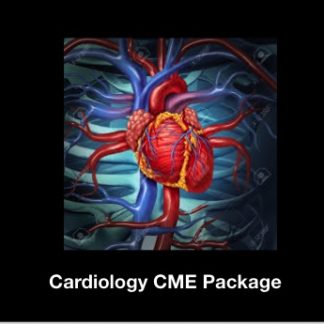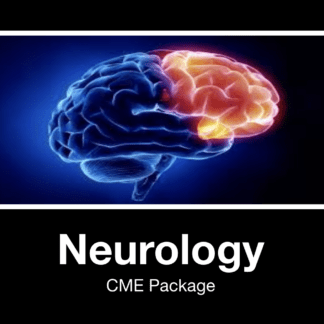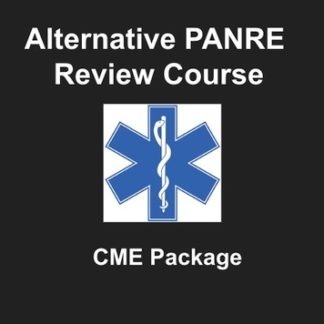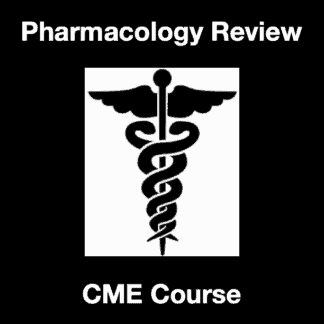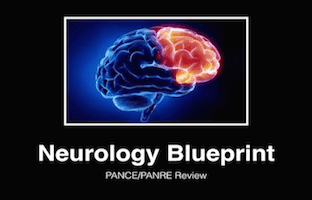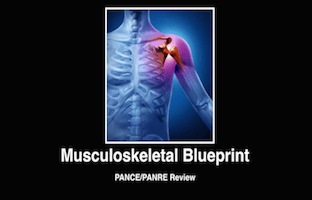Description
Neurology Blueprint PANCE/PANRE Review and Video
This section is review of the Neurology Section for the NCCPA Blueprint topic list for the PANCE and PANRE. This section contains the Neurology Blueprint Lecture Video (1:39:11), as well as 106 NeurologyMultiple Choice PANCE style questions, answers and detailed explanations. Neurology Blueprint Lecture Slides are also included. This Neurology section will be continuously updated and you will be given access for 30 months.
This Neurology section is designed for physician assistants preparing to take the PANCE/PANRE. Medical students preparing for the USMLE and COMLEX may find this section helpful.
We do offer category 2 CME with Amazon and Apple Gift Cards. Click here if interested in CME with Amazon and Apple Gift Cards
This is in a mobile friendly form.
Neurology Blueprint Preview Questions, Answers, and Detailed Explanations:
Neurology Blueprint
Questions, Answers, and Explanations
Question 1
Your patient is a 56 year old male that presents after he passed out. He denies any chest pain or shortness of breath. He is on no medication and has no known medical problems. On exam he has a II/VI systolic murmur. His vitals are as follows BP-112/68, HR-92, Temp-98.6 F, RR-20, SpO2 99% on room air. Which of the following tests would have the highest yield in possibly detecting an etiology of his syncope?
A. CTA of Chest with IV contrast
B. Troponin
C. Echocardiogram
D. MRI of Brain
Answer 1
1. Choice C is the correct answer. This patient likely has cardiac syncope given his history and physical exam findings. A systolic murmur can be present in aortic stenosis which can lead to syncope. An ECHO would also be helpful to assess his ejection fraction to look for any evidence of cardiomyopathy. While thoracic aortic dissection and pulmonary embolism can lead to syncope, this patient is not symptomatic and has normal vital signs. A CTA of chest would be low yield. Neuroimaging in cases of syncope is low yield. Most cases of syncope are do to orthostatic changes, cardiac etiology or reflex (vasovagal) syncope. A troponin would not be helpful.
Question 2
2. Your patient is a 45 year old male that has a history of diabetes complains of bilateral lower extremity numbness and pain in a glove like distribution. There is no evidence of swelling or cellulitis. He states that this is been worse over the last several months. He states that pain is worse at night. He has no change in the pain with exertion. Which of the following medications would be the best to start managing this patient’s symptoms?
A. Norco
B. Ultram
C. Plavix
D. Lyrica
Answer 2
2. Choice D is the correct answer. This patient has peripheral neuropathy likely secondary to his diabetes. Plavix would be appropriate if you thought the patient had intermittent claudication. The patient’s symptoms do not changes with exertion. Norco and Ultram should be avoided with patients with chronic pain because of tolerance issues and abuse potential.
Question 3
3. Your patient is a 45 year old female that presents with recurrent headaches that are unilateral accompanied by ipsilateral rhinorrhea and eye watering with the headache. The patient states she gets them several times a month. Which of the following medications are recommended for prevention of these types of headaches?
A. Depakote
B. Verapamil
C. Norvasc
D. Oxygen
Answer 3
3. Choice B is the correct answer. Verapamil is the first line medication for prevention of cluster headaches. Oxygen is actually used as abortive treatment for cluster headaches. Norvasc does not have any role for prevention of cluster headaches. Depakote is usually not used for prevention of cluster headaches.
Question 4
4. Your patient is a 23 year old male the presents with headache, fever, nausea, vomiting, neck pain and photophobia. He is alert and oriented times 3. His vital signs are as follows: Temp 103.1 degrees F, BP 112/72, HR 118, RR-22, SpO2 98%. His spinal fluid analysis is as follows WBC 347, RBC 0, Glucose and protein normal. Which is the most likely diagnosis?
A. Viral Encephalitis
B. Viral Meningitis
C. Bacterial Meningitis
D. Fungal Meningitis
Answer 4
4. Choice B is the correct answer. One major differentiation between encephalitis and meningitis is that patients with encephalitis will have some alteration of consciousness or mental status changes. It is possible to have both. This patient has a normal mental status. WBC over 5 in the CSF suggests meningitis. Patients with bacterial meningitis typically have a WBC in CSF over 1000. With viral meningitis the glucose is normal, and with bacterial meningitis the glucose is low.
Question 5
5. Your patient is a 72 year old male that present with an essential tremor. Which of the following medications would likely work best in controlling his symptoms?
A. Primidone
B. Ativan
C. Selegiline
D. Baclofen
Answer 5
5. Choice A is the correct answer. Primidone is first line medication for essential tremor. Selegine is a second or third line medication for Parkinson Disease. Ativan may help tremor but may make the patient prone to falling. Baclofen would not help tremor.
Question 6
6. All of the following are characteristics of Parkinson Disease except:
A. Patients with Parkinson can have postural instability
B. The tremor of Parkinson is at rest and decreases with intentional action
C. Cognitive dysfunction and dementia are not usually seen with Parkinson disease
D. Levodopa is considered first line treatment in Parkinson Disease.
Answer 6
6. Choice C is the correct answer. Cognitive dysfunction and dementia are common with Parkinson Disease.
Question 7
7. Your patient is a 34 year old male that presents with recurrent headaches that you ordered an MRI and MRA. His MRI/MRA of the brain reveals a 3 mm cerebral aneurysm. Which of the following is the best management option?
Recommend routine monitoring of this aneurysm every two to three years with an MRA of head.
B. Call neurosurgery and recommend immediate removal
C. Recommend a CTA of head for further characterization.
D. Start the patient on Fioricet
Answer 7
7. Choice A is the correct answer. Surgical intervention is not recommended until they are over 7 mm. The current standard of care is to get an MRA or CTA of head every 2-3 years to monitor the growth. A cerebral aneurysm of this side is not causing symptoms so starting the patient on Fioricet for this is not recommended. A CTA of head will not characterize this aneurysm any further.
Question 8
8. Your patient is a 54 year old male that presents with right side facial droop, dysarthria, right upper and right lower extremity weakness. His vital signs are as follows: BP 156/92, Pulse 89, RR 14, Temp 98.4 degrees F, and SpO2 96%. Which of the following should be the first management plan?
A. Get a POC Glucose
B. CT scan of Head without contrast
C. ASA 325 mg PO now
D. Give the patient TPA
Answer 8
8. Choice A is the correct answer. Any patient with a neurologic deficit the first step is to get a POC glucose. Hypoglycemia can mimic a CVA. The patient needs a CT scan of his head, especially if he is not hypoglycemic. If the CT scan demonstrates a thrombotic stroke and no bleeding. Aspirin should be given if the CT scan does not show any signs of bleeding. This patient may be a candidate for TPA, more information has to be obtained to see if he is a candidate and does not meet any exclusion criteria for TPA.
Question 9
9. Your patient is a 45 year old male that presents with a history of IV drug use and has an acute thrombotic CVA by CT scan with no evidence of bleeding. His BP is 235/120 and HR is 88. Which of the following antihypertensive is the best choice to manage his blood pressure.
A. Mannitol
B. Labetolol
C. Cardene
D. Nitroglycerin
Answer 9
9. Choice C is the correct answer. Cardene is the medication of choice in this situation. Labetalol would also be acceptable if there was no concern for illicit drug use. Cocaine which is a potent alpha agonists. Beta blocker when they are administered can cause unopposed alpha stimulation and be fatal. Mannitol is sometimes indicated to decrease ICP in cases of severe cerebral edema.
Question 10
10. All of the following are common causes for decreased level of consciousness:
A. Hyperthyroidism
B. High Ammonia
C. Sepsis
D. Massive cerebral hemorrhage
Answer 10
10. Choice A is the correct answer. Hyperthyroidism is usually not a common cause of decreased level of consciousness. High ammonia, sepsis, and massive cerebral hemorrhage are all common causes of cerebral hemorrhage.
